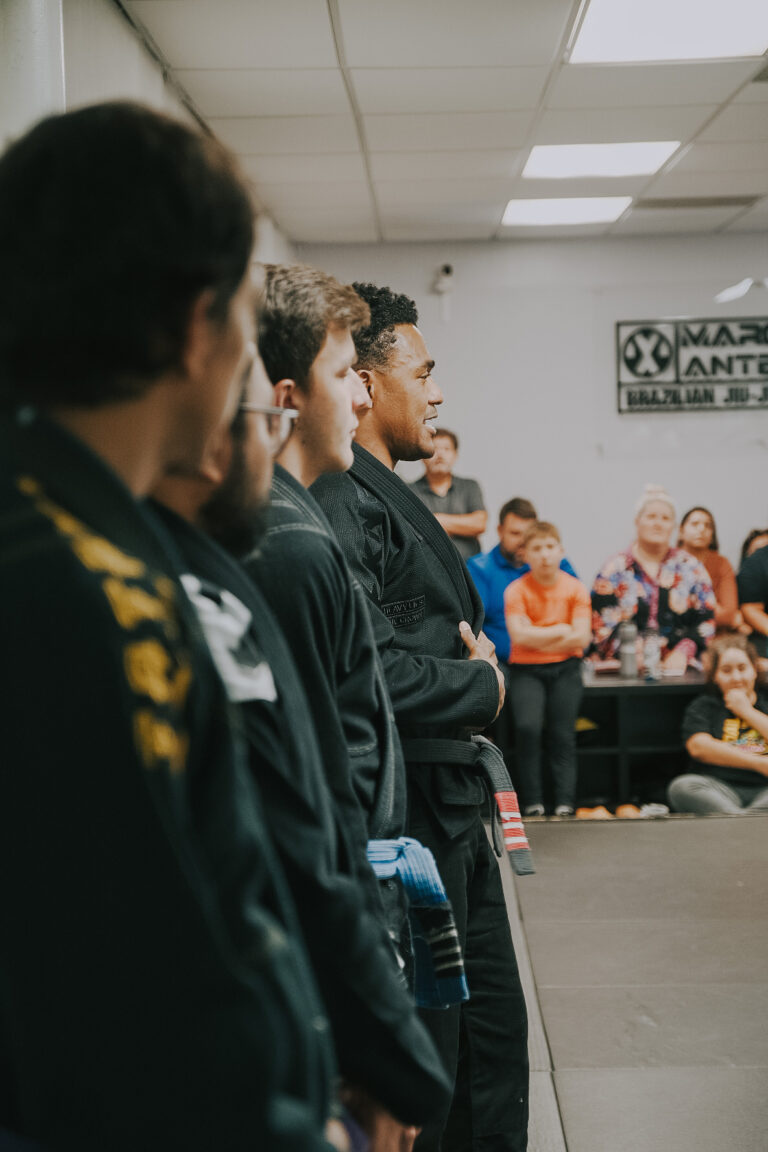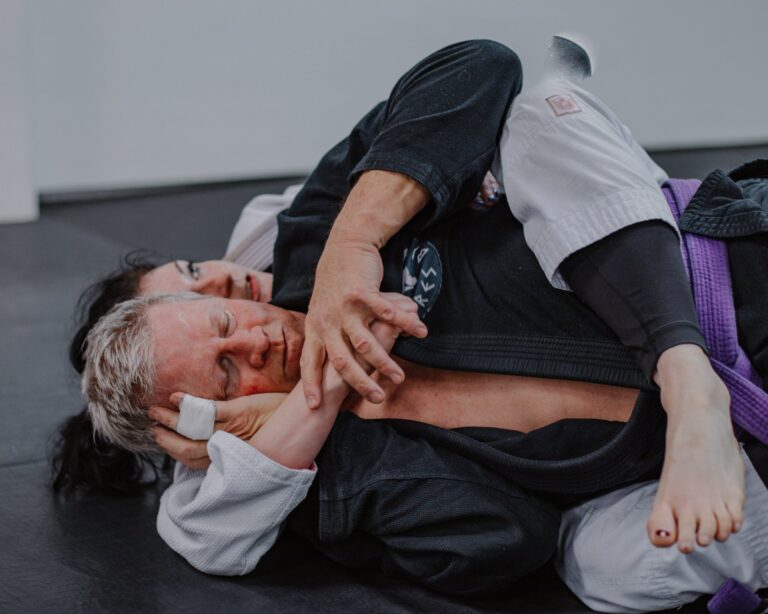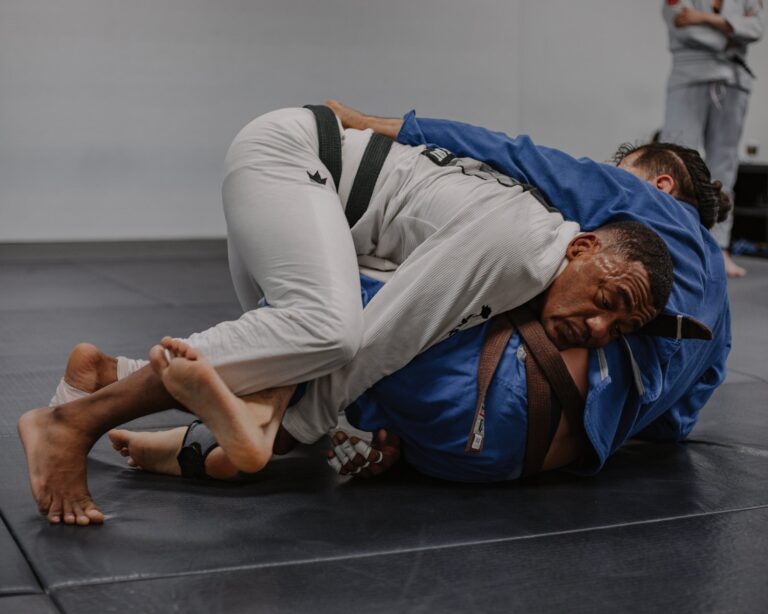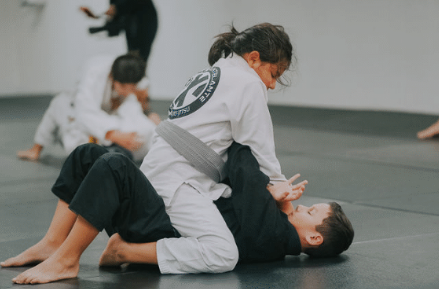The Blue Belt Survival Guide: Essential Tips for Grapplers in Irving, Texas
Congratulations! Earning your Blue Belt in Brazilian Jiu-Jitsu is a significant achievement. It means you have mastered the fundamentals of self-defense, understand the primary positions, and can survive a difficult roll. However, many students refer to this period as the “Blue Belt Blues”—a phase marked by a plateau in learning and often frustration.
Discover MA BJJ Academy
1. The Mental Shift: Developing Your Game
As a white belt, your goal was simple: survive and learn positions. As a blue belt, your focus must shift from collection (learning techniques) to application (using them effectively).
Define Your “A-Game”
You cannot be great at everything, but you must be great at something. Now is the time to identify your core strengths and weaknesses and build a cohesive system around them.
Choose Your Path: Do you prefer playing guard (open guard, spider, or Z-guard) or passing (pressure or speed)? Do you favor a knee shield or a deep half-guard? Pick 2-3 main positions and dedicate 80% of your drilling time to mastering the entries and submissions from those positions.
The Chain: Your “A-Game” should be a chain of three moves. For example: Pass Guard → Side Control → North-South → Americana. If one move fails, you transition immediately to the next. This foresight is what separates a proficient blue belt from a beginner.
Embrace the Plateau
The Blue Belt Blues are real because your learning curve flattens. As a white belt, every class delivered massive progress. As a blue belt, the gains are subtle—a slight adjustment in a grip, a fraction of a second faster transition.
Focus on Detail: Instead of seeking new moves, focus on improving the timing and pressure of moves you already know. The difference between a successful armbar and a failed one is often just the placement of a thumb or the angle of the hips.
Drill with Resistance: Start drilling with a partner who offers light resistance. This helps you bridge the gap between static practice and live rolling, simulating the pressure of a BJJ class in Irving.
2. Technical Refinement: Training Smarter
A blue belt is expected to control the pace and direction of a roll against a lower belt. This requires intelligent training and precision, not just strength.
The Importance of Grips
Grips are the foundation of Brazilian Jiu-Jitsu. As a blue belt, you must treat grips as weapons and shields.
Grip Before Position: Never settle into a position without establishing dominant grips first. Your grips should dictate your opponent’s movement.
Breaking Grips: Learn 2-3 reliable methods for breaking the most common Gi and No-Gi grips. Knowing how to neutralize an opponent’s advantage is critical, especially when rolling with tough opponents in the Dallas area.
Master the Fundamentals (Again)
You learned the basics as a white belt, but you must master them as a blue belt. Mastery means execution under pressure against a resisting opponent.
Positional Escapes: You should be able to consistently escape the major pinning positions (side control, mount, back control) against 90% of white belts and many other blue belts. Defense is your greatest asset at this stage.
Transitions: The transition between positions is where the most dynamic fighting occurs. Focus on drills that chain movements: Guard pass → Side control → Mount → Back.
Roll with Everyone (Especially the Higher Belts)
Rolling with diverse body types and skill levels is essential.
Lower Belts (White Belts): Use these rolls to practice your A-Game and experiment with new techniques. Slow down and focus on perfect execution.
Higher Belts (Purple/Brown/Black): Use these rolls for defense and survival. Do not worry about submitting them. Your goal is to neutralize their best moves and defend for as long as possible. This is where you truly learn to conserve energy and manage the pressure.
3. Beyond the Mat: Consistency and Community
Your longevity in the sport depends on your approach to training, rest, and your role within the academy.
Prioritize Smart Training and Longevity
The blue belt is the rank where many long-term injuries occur due to overconfidence and trying to “win” every roll.
Listen to Your Body: If something hurts, take a day off or drill lightly. Consistent training over ten years is better than intense training that results in a two-month break due to injury.
Cross-Training: Incorporate strength and conditioning, mobility work, and yoga. A strong, flexible body is less prone to injury and handles the rigors of BJJ training better.
Diet and Rest: Discipline extends beyond the mat. Fueling your body correctly and prioritizing sleep is when your muscles and your brain recover and consolidate the techniques you learned.
Embrace Your Role as a Mentor
As a blue belt, you become a leader on the mat. You are the bridge between the beginner and advanced students.
Help White Belts: Assist your instructors by clarifying details for white belts. Teaching is the best way to solidify your own understanding of a technique. When you can articulate why a move works, you truly own the technique.
Represent the Academy: Uphold the high standards of respect and camaraderie practiced at the MA BJJ Academy. Your attitude shapes the culture for the newer students.

Stay Connected in Irving near Dallas
The best way to beat the Blue Belt Blues is to commit to your community. Consistency is easy when you enjoy the people you train with.
If you are a blue belt looking to refine your skills or a white belt ready to take the next step in your journey, our academy in Irving near Dallas offers a structured and challenging environment designed for growth at every level. We provide expert coaching focused on the technical details needed to succeed past the beginner phase.
Discover MA BJJ Academy
Visit our website today to learn more about advanced training options and find a BJJ class that fits your game. The blue belt is where the real journey begins—stay disciplined, stay focused, and keep showing up!








